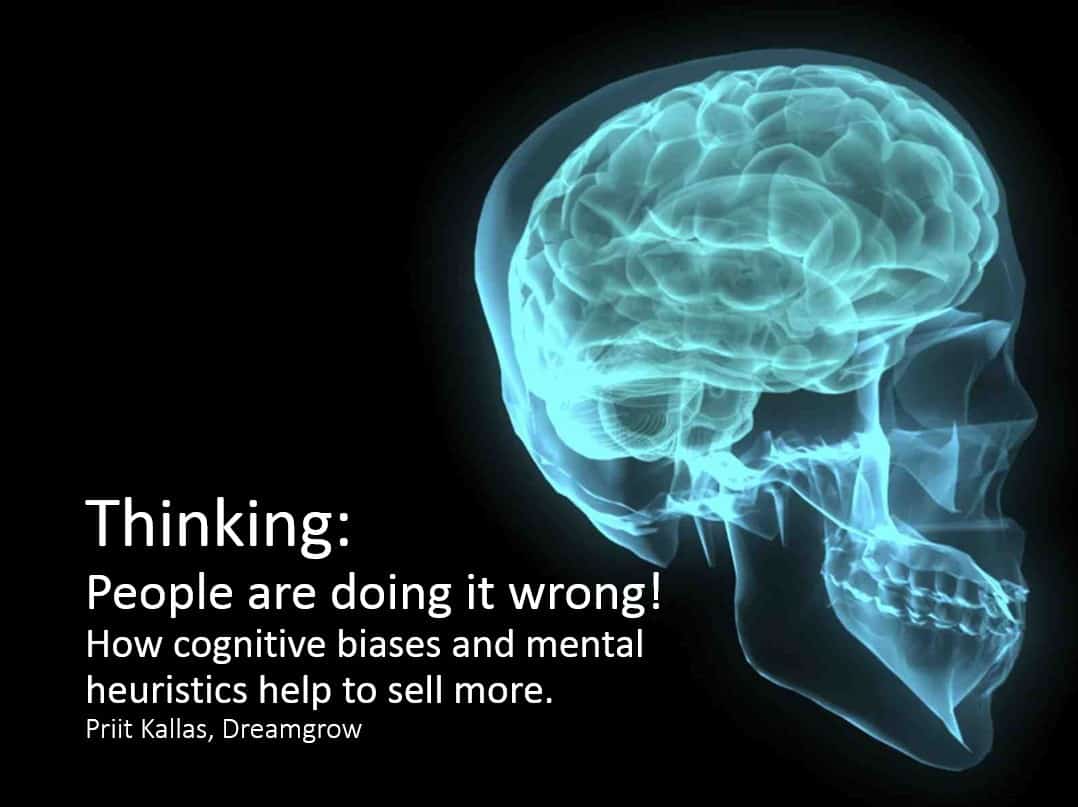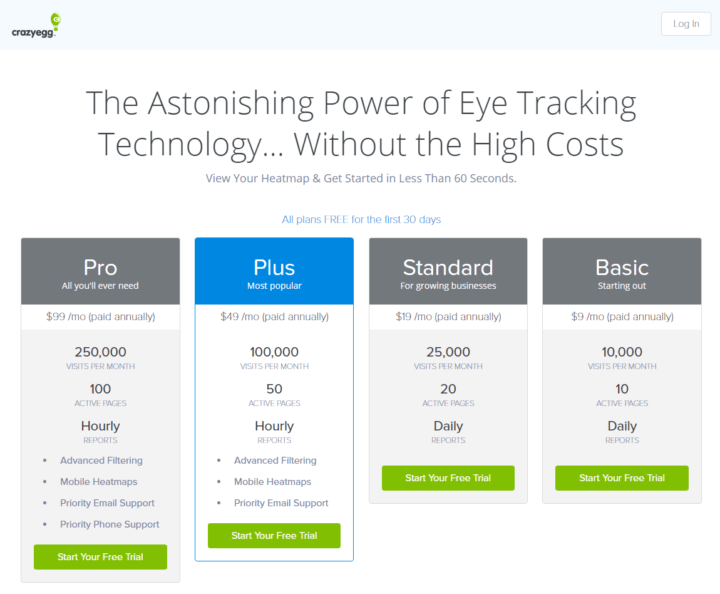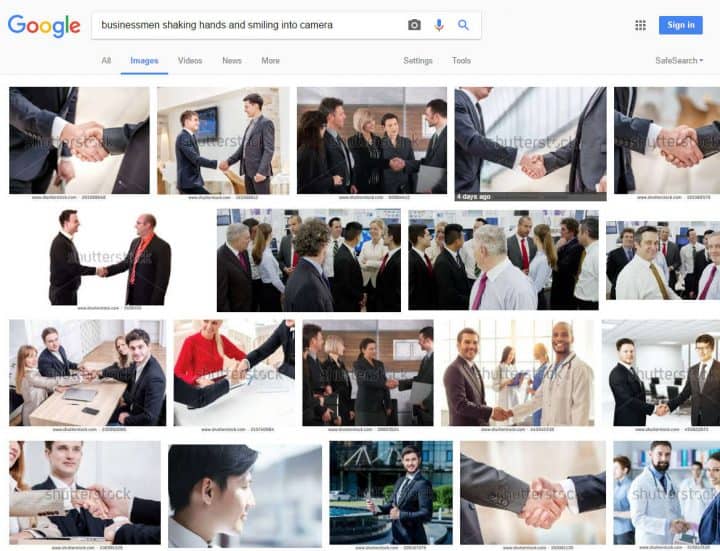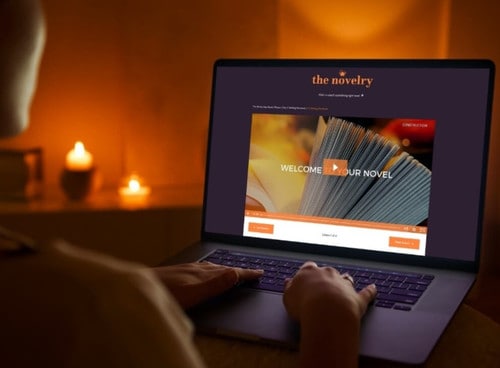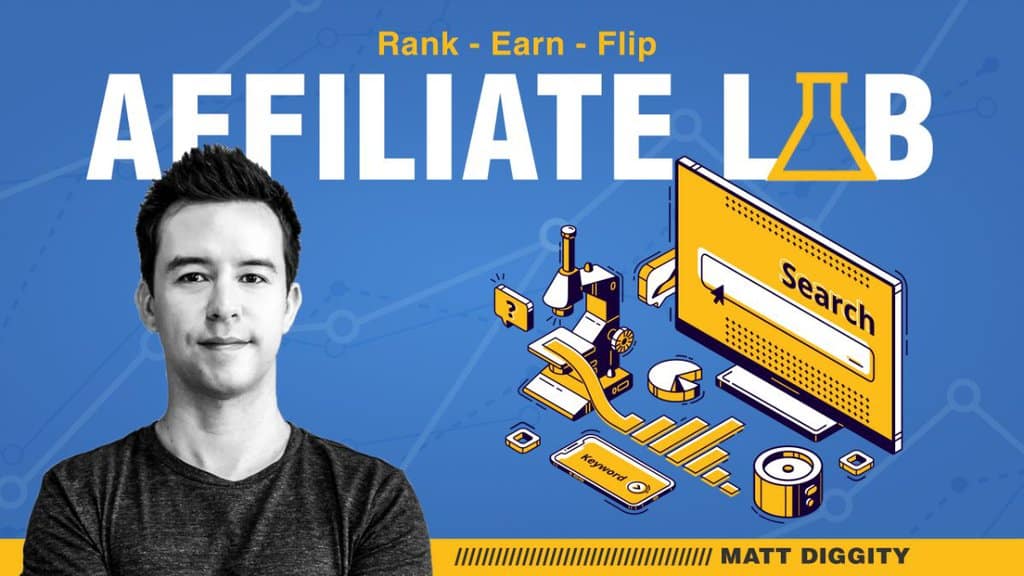Cognitive biases are something we all have to live with. But we can use them to our advantage in sales, marketing, and conversion optimization. Here are the slides from 3-day traffic and conversion event Digital Elite Camp. Dreamgrow is organizing this event in cooperation with ConversionXL.
My talk covered cognitive biases and mental heuristics that marketers can use to persuade people. Endowment effect, loss aversion, sunk cost fallacy, and others help us write better copy and make better converting landing pages. In the onboarding process, you can use different cognitive biases to get users to stick with the program.
Here are the slides of the talk: Thinking: People are doing it wrong! How cognitive biases and mental heuristics help to sell more:
Deeper understanding of human behavior
Understanding how people think can be applied to more situations than statistical methods like conversion optimization. I live in a tiny country of Estonia. The main problem we have implementing conversion optimization is that most of the time we do not have enough traffic. This means that sometimes the experiments do not reach statistical significance thresholds.
In our case, the problem is the small population. Marketers from countries with populations in low millions or even less have this problem. Iceland for example. The same problem occurs when you are marketing to a very small target audience. When you have 100 or fewer conversions per month, then the statistical results start to be shaky. If you have a small site and not a lot of data, then it is important to understand what makes users tick. Talk to them, involve them in the process, create personas.
Cognitive biases will give you a toolset that has been tested on larger audiences and found to increase desired results.
Contextual priming: Where people vote affects how they vote
Where and when we get the message affects the result. Office, home, car, mobile, desktop, etc. Research has shown that people who vote in schools are more likely to support tax hikes that will fund education.
Results: 56% of voters voted for a pro-school budget when voting in a school vs. 53% otherwise. It was statistically significant and was reproduced in a lab environment 64% of people voted for a fake pro-school budget when shown pictures of a school vs. 56% who voted for it otherwise.
What this means for marketers is that you can target and time your campaigns so that you reach people in situations that are more favorable to you. Want to reach people on desktops? Consider getting a message to them during the working hours when they are most likely to be using a computer. To get them on mobile target early morning hours, later in the evening or commuting hours.
Targeting people in the evening is especially sneaky as most of the willpower is depleted and people are more likely to be persuaded by marketing messages. Dig into how willpower and motivation works.
People don’t think!
We are all going through life on autopilot. Our brains are using hundreds of heuristics to avoid spending too much energy. This mode of thinking is called System 1. People will choose what is comfortable and familiar whenever it is possible. We don’t like things that are complex and strange.
Make sure you use simple words, easy to understand messages, familiar imagery, and other easy to digest elements in your marketing. If your content makes people think too much you will lose sales.
Anchoring Effect
The first bit of information establishes a range of possibilities. That opening information anchors everything that follows. Anchoring effect is almost impossible to avoid. The anchor works even if you consciously know that the anchor is wrong and you are being manipulated.
In one study two groups of students were given different anchors that were clearly wrong. They were primed with a question whether Mahatma Gandhi died before or after age 9, or before or after age 140. As expected the two groups answered differently. The average answer was 50 in the low anchor group and 67 for the high anchor group. (So that you know, Gandhi was assassinated when aged 78).
Here's how Crazy Egg does it:
Less-is-better effect
People tend to evaluate different aspects of the product or service depending on whether they are doing a side by side comparison or view items separately. Some examples from research (PDF):
- seven ounces of ice cream overflowing in a small cup was preferred over eight ounces of ice cream in a much larger cup
- a dinnerware set with 24 intact pieces was preferred over a dinnerware set of 31 pieces with a few broken pieces
- a smaller dictionary was preferred over a larger dictionary with a torn cover
- participants perceived people giving away a $45 scarf as more generous than those who gave a cheap $55 coat.
When evaluating separately, people were willing to pay almost 40% more for the smaller cup $1,66 vs. $2,26.
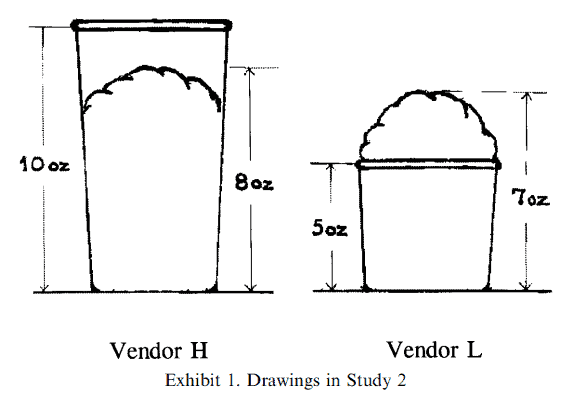
Availability heuristic
We overestimate the importance of the information that is available to us. Running ads for winter tires when there’s news about car crashes gets more people buying new tires. You can use that in by creating lots of ads that you can run instantly when the news breaks that could influence the decisions of your buyer's make.
Endowment Effect
You are less likely to give up something you own than you would be willing to pay to get it. In a classic study Daniel Kahneman, Jack Knetsch, and Richard Thaler gave mugs to participants. When people felt that they own the cup, then they valued it approximately twice as high as “just a cup.”
Participants were willing to buy a mug for $5, but once they owned it, they wouldn’t sell for less than $10.
Endowment effect also happens in auctions when people placing bids feel the item is already theirs. The feeling will lead to overbidding just to get “my” item.
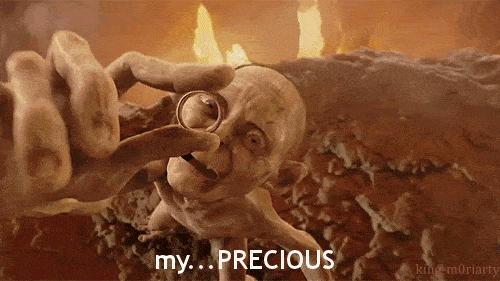
You can use the endowment effect in many ways:
- Scoring points – awarding loyalty points for buying will lead to a situation where people will prefer your offerings so that they wouldn’t lose points.
- Provisionally awarded bonus – Here you go, here’s your reward. It is yours if you reach this or that milestone.
You can combine these by awarding points in advance on conditions that have to be met in a certain period. Bonuses awarded in advance have been shown to increase buying frequency. In a study car wash customers had to collect 8 stamps to get a free wash. In one condition the stamp card had 8 empty slots for stamps. The second version of the card had 10 slots, but two were already stamped. The redemption rate for the 10 stamp version was 34 percent versus 19 in the case with 8 stamps. Additionally, the 10 stamp cardholders washed their cars more often with 2.9 days less between washes than the other condition.
This technique also relies on our need for consistency. When people tend to commit to something, then they are more likely to follow through if the commitment is somehow formalized. In this case, the commitment device was the stamp card.
We aspire to round number goals
20 push-ups, not 19. When people have a number as a goal, then they tend to make that number round. Major League Baseball players are four times more likely to end the season with a 0.300 batting average than 0.299. The same is true of SAT score, training distances, and time (study).
How do you use it? First thing when creating goals make sure they are round. Second, select a round number that is above your average goal. Third, don’t go so high that your audience feels that the number is unreachable.
For example in a chain of gas stations ran a campaign where you could win a car by pumping exactly 40.00 liters of gas. That number was above the average but not too much.

The IKEA Effect
When you work on something, then you will place disproportionately high value on that thing. IKEA furniture is one of the best examples of this. And it does not matter what the quality of the result is.
The IKEA effect is a psychological tool you can use in the onboarding process. Give your users simple steps to get something done and then they will be more likely to complete the whole process. The results can be amplified by adding endowment effect and giving out rewards.
You should keep in mind that IKEA effect only works when people can complete the task. If they fail at the task, then they lose interest.
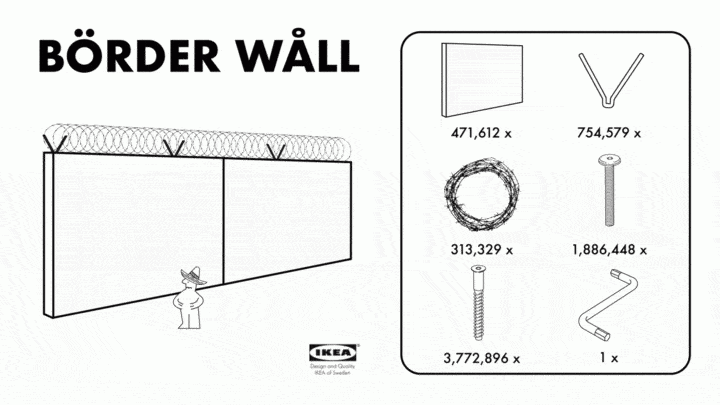
Just add water!
To get your audience moving towards endowment and IKEA effect give them easy first steps to put in their own effort. Begin with something that is very easy to do and make the tasks harder step by step. This will ensure that the largest number of people will reach the goal you have set.
Picture superiority effect
Concepts learned by viewing pictures are more easily and frequently recalled than those that are learned by viewing their written word form counterparts. Research shows that images are the most important elements of print advertising. This result is the same for consumer and business audiences. A lot of research has been done on print advertising. Print is not the most important advertising format in the 21st century, but some of the ideas can be applied to the digital medium.
Always use images in your content, product, and service pages. Larger and higher quality images tend to make e-commerce sites convert better. While it’s clear that you should have great product images. What to do when you have a service like accounting? You can’t easily take a picture of accounting and use that. So, most marketers fall back to clichés. A lady with glasses and a calculator, businessmen shaking hands and smiling into camera…
Please don’t do that! Jakob Nielsen’s studies have shown that these images are like Teflon to people, their eyes will slide right over them. Avoid images that do not add value to the content.
Back to our accounting example. What to use in the place of smiling businessmen? Draw a graph of the process how you make your customers lives easier. Ask a designer to make it look beautiful and use it. The same approach works for many complex services. Visualize, then simplify.
Loss aversion
Study after study has shown that we try harder to avoid loss than gain rewards. The relationship between losses and gains is about two to one. This means that if you avoid losing $5, you get more satisfaction than finding $5. Finding $10 is about the same value.
There’s some experimental evidence that loss aversion is stronger when we have to work for results and compare ourselves to others in a competitive situation.
In marketing, you can use loss aversion to bring back existing customers through rebates and collected loyalty points. In the SAAS model, you can expect people who have put in more effort in trial period convert to paying customers at a higher rate.
You can test this in your own marketing by framing the same transaction in as a loss or as a gain: would you rather get a $5 discount, or avoid a $5 surcharge? The price customers pay at the end is the same, but the frame changes how people think about it.
Sunk cost fallacy
Sunk cost fallacy or escalation of commitment is a behavior where increasingly negative results in activity will lead to more investment of time, money, and even lives. People involved will go on in the same direction rather than altering the course or stop altogether. The saying goes:
If you find yourself in a hole, stop digging!
It seems that we are often unable to do that. Sunk cost fallacy is irrational behavior with negative consequences. This is how some unethical marketers get people to increase commitment even in situations where that will result in larger losses for them. For example, Nigerian letter scammers may milk their victim for a long time before losses are big enough for them to stop.
Choice-supportive bias
When you choose something, you tend to focus on positive feelings about it, ignoring the flaws your choice has. We tend to amplify the positive qualities of the choices we have made and downplay the attributes of other options we had at the time of decision. Studies show that memories about our choices tend to be distorted in predictable ways. That also applies to ignoring the downsides of our choices. First, our opinion about our actions will be biased, but this bias can also change our future actions.
For example, this is a big part why we keep using one brand over another. Choice-supportive bias may be one of the most important psychological factors behind Apple becoming the most valuable company in the world.
You can boost choice-supportive bias in your marketing by active post-purchase communication that highlights various aspects of the product or service. In a generic form “Did you know you can do X” will help you give more satisfaction to your new customer. This will also increase the potential for repeat purchases.
A special case of this is post-purchase rationalization where people actively persuade themselves through rational argument that a purchase was a good value.
Unit bias
We want to finish a given unit of a task or a unit. We believe that there is an optimal unit size and we want to get through to the end receiving satisfaction from completing the unit. This is an incredibly strong driver in food industry portion sizes and healthy eating. Six pack, larger bottles, and plates.
This is also a great tool to get people to finish tasks. Give them a checklist or a set of tasks that have a defined endpoint and the completion rates will be higher than for an open-ended activity.
Some people freak out when they see this:
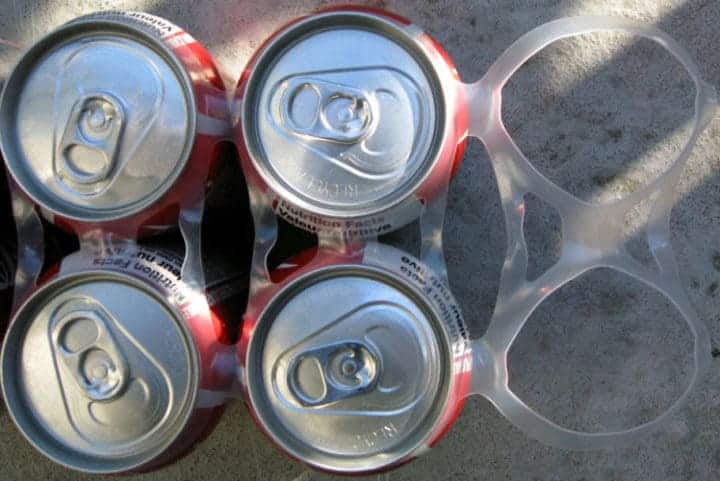
Hyperbolic discounting
People want an immediate payoff rather than a larger gain later. The discounting is larger for short initial periods of up to one week. For longer periods ranging from 10 to 21 weeks the decrease in perceived value is slower.
For marketers, this means that you should structure the payment plans and bonuses in a way that potential buyers feel the current value they get and ignore the expenses that come with the decision later. Some examples of that include:
- Get your new smartphone now, pay only $49/month for two years.
- Get your credit card now, first month 0% APR later 20%.
- First 3 months free, $X after that.
We have all seen this type of advertising. Time and again most people will take these deals and feel totally fine. We want instant gratification; consequences be damned.
The Current Moment Bias
When we have to make a choice, then we often chose to have pleasure now and leave the pain for later. If you have to decide what you will have for a snack next week, your choice between healthy and tasty will be healthy. The same choice right now usually leads to a less healthy but tastier option.
A 1998 study showed that, when making food choices for the coming week, 74% of participants chose fruit. But when the food choice was for the current day, 70% chose chocolate.
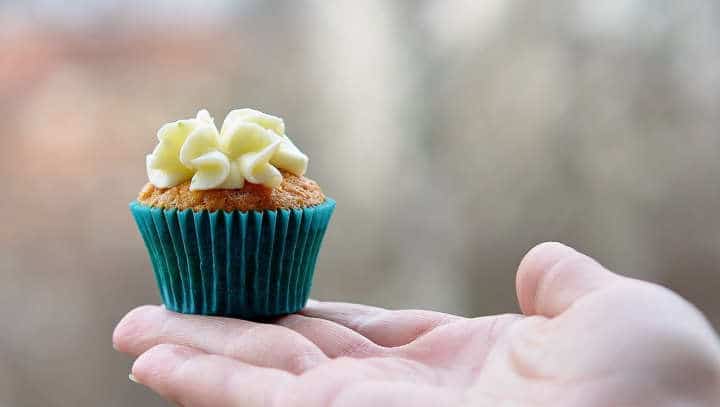
Confirmation bias
We search, interpret, and recall information in a way that confirms our beliefs and hypotheses. In marketing, we can use the confirmation bias by asking leading questions. For example in a study people were asked about their social lives in two different ways. First “Are you happy with your social life?” or second “Are you unhappy with your social life?” In the first condition, people felt that they were more satisfied than participants in the second group.
Related to confirmation bias is a preference for early information. Great copywriters know instinctively that the word order influences how we perceive ideas. This has been confirmed by research. When you list positive aspects before the negative, people form a more positive impression of someone. In the experiment, some participants were presented a list beginning with positive words “intelligent, industrious, impulsive, critical, stubborn, envious.” Others got the same list in reverse.
But I didn’t add confirmation bias here as a marketing tool. For you, as a marketer, it is important to avoid confirmation bias in your own work. Whenever you experiment with different marketing tools, make sure the results are really there and not just a figment of your imagination.
Try to contradict your own ideas, so you will understand what’s working and what’s just a coincidence. This will make you a better marketer, and you will build a cache of tools that work more often than they don’t.
Observer-expectancy effect
This is another cognitive bias that you as a marketer should avoid. This happens when a marketer expects a given result and therefore unconsciously manipulates an experiment or misinterprets data to find it.
Observer-expectancy effect is most notable when analyzing data and discussing the results. Most of us have an opinion about what the results of a campaign mean and tend to lean towards the explanations we expected. To avoid potential mistakes try to be as objective as possible.
Bias blind spots
Of course, the last two cognitive mistakes are something you would never make. The reason you think that is that we see cognitive biases more in others than in ourselves. Everyone thinks that they are less biased than other people.
We think we know how and why we make our decisions and we know that we don’t have a bias. We are objective and reasonable people after all. However, most of our decisions are the influenced by unconscious processes, and we can’t see them. Unconscious processes are hidden leading us to think we don’t have them.
Teaching and using statistics did not develop an intuitive sense of the reliability of statistical results in small samples. Our judgments were biased… – Daniel Kahneman
Cognitive biases and mental heuristics: 92 Decision-making, belief, and behavioral biases + 26 Social biases + 51 Memory errors and biases en.wikipedia.org/wiki/List_of_cognitive_biases and en.wikipedia.org/wiki/List_of_memory_biases
Homework assignment: Go to Wikipedia list, pick one every day and find ways to use it in your marketing.
________________________
Photo credits: Russ and Cupcake
